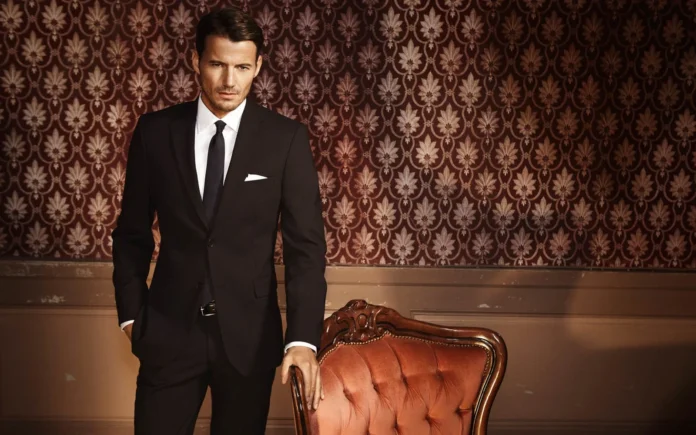
Men’s fashion and hairstyles have gone from merely practical to profoundly psychological. What was once a simple matter of function—keeping warm or maintaining personal hygiene—has evolved into a complex display of personality, status, and societal norms.
Here, we strip down the flashy facade of men’s fashion to its most basic elements.
Table of Contents
A Historical Overview
Historically, the clothes and hairstyles men adopted were dictated by necessity and availability. Kings and warriors adorned themselves with symbols of power like crowns or elaborate armor that were as much about protection as they were about display.
Moving through time, the Industrial Revolution standardized men’s wardrobes to suit factory needs, culminating in the utilitarian suit. Even the rebellious haircuts of the 1950s and 1960s served a purpose—they marked a clear demarcation from the generation before.
In examining the history, it’s clear that men’s fashion choices, much like ED treatment, were less about aesthetic pleasure and more about signaling wealth, power, or rebellion against established norms.
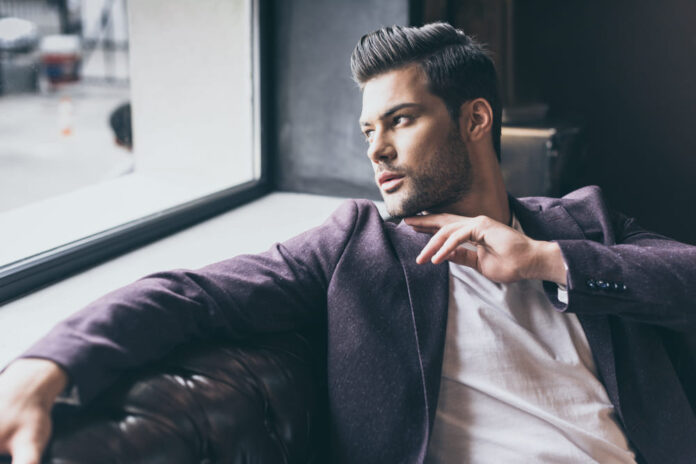
The Modern Mane
The evolution of men’s hairstyles can be seen as a reflection of changing societal views on masculinity and aesthetics. From the powdered wigs that were as much about lice prevention as they were about flaunting wealth, to the mullets and mohawks that screamed non-conformity, hair has always served as a personal billboard.
Today’s styles like undercuts or fades are just contemporary interpretations of a long-standing tradition—using hair to silently communicate with those around us.
Dress Codes Decoded
The modern man’s wardrobe is supposedly a realm of infinite choice, but is it really? Suits for professionalism, casual wear for relaxation, and activewear for health-consciousness.
The suit, that great bastion of menswear, has relaxed somewhat in its structure but it still carries the echo of its corporate cage. Meanwhile, the rise of streetwear brands has supposedly democratized fashion, but even this is just another uniform for the young and trendy.
Men’s clothing remains a canvas, but what it portrays is often a carefully curated image shaped by societal expectations and deep-seated norms.
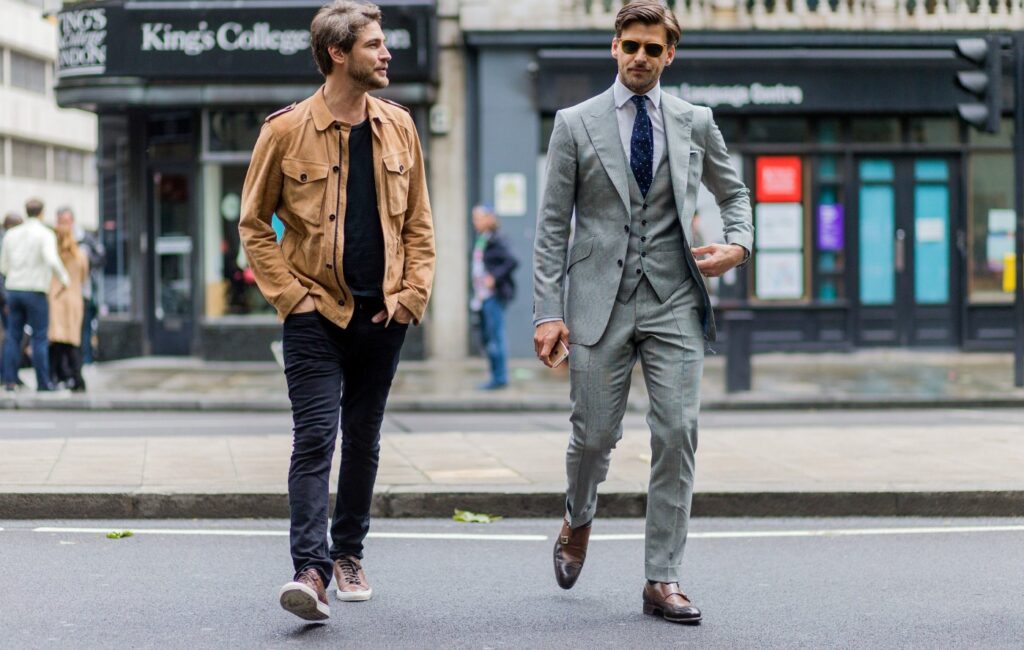
Psychological Dressing
It’s said that clothes make the man. If so, they are making him increasingly self-aware and anxious. Psychological studies suggest that our attire influences our confidence and mood; wearing a sharp suit might enhance perceptions of authority and competence, while casual clothes might relax our demeanor.
But these effects are double-edged swords. The boost in confidence can quickly become a reliance on external validation—what happens when the suit comes off? The rise of ‘athleisure’ suggests a merging of comfort and style, but it also hints at a society that can never truly switch off, always needing to be ready for the next activity- also causing depression.
Identity and Inclusion
Fashion and hairstyle choices are pivotal in shaping male identity and facilitating social interactions. What a man chooses to wear can act as an instant language, speaking volumes about his background, profession, and beliefs. This is not a trivial matter in an increasingly globalized world where first impressions are often gleaned from visuals alone.
Yet, this visual shorthand can be as limiting as it is liberating. It can pigeonhole men into expected roles or stereotypes—think of the ‘tech bro’ uniform of a hoodie and jeans, or the ‘finance guy’ pinstripes. Fashion becomes not just a personal choice, but a societal label.
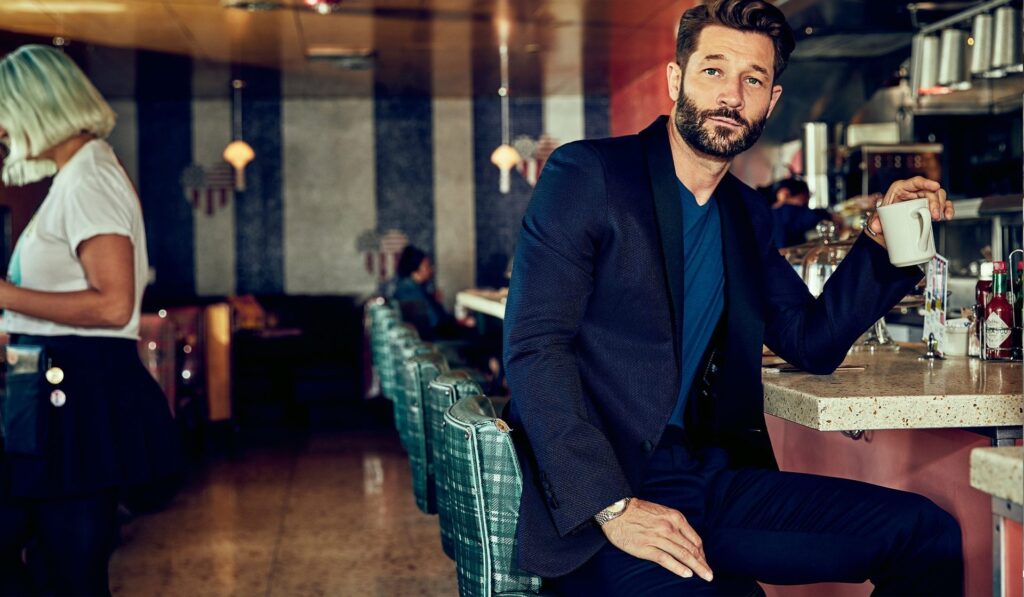
Integrating Fashion, Hair, and Health
Integrating an awareness of fashion and hair styling with a proactive approach to health can lead to a more balanced and enriched lifestyle. Here’s how men can blend these aspects:
- Confidence through style ─ Choosing outfits and hairstyles that not only look good but feel good can naturally enhance a man’s confidence. This boost is particularly beneficial for those dealing with ED, as confidence can be a critical factor in both social interactions and personal intimacy.
- Routine and wellness ─ Regular visits to a stylist or barber provide not just cosmetic upgrades but also a routine that supports mental health. These routines can become checkpoints, where men not only refine their looks but also have an opportunity to speak about their stresses and health concerns in a supportive environment.
- Fashion as a form of therapy ─ Engaging in shopping or styling can serve as therapeutic activities that alleviate stress and improve mood. This aspect of fashion can be particularly potent when men choose styles that resonate deeply with their personal identity and body image, promoting a healthier and more satisfying life outlook.
Future Directions in Men’s Health and Style
The future of men’s health and fashion will likely see a greater convergence of style and substantive health discussions. Innovations such as smart garments that can monitor health indicators are on the horizon. These technologies could integrate with mobile health applications to provide men not only sartorial suggestions but also health-related data that could help in managing conditions like ED.
Moreover, the fashion industry can play a pivotal role by promoting not just styles but also wellness-oriented products and services. Campaigns that focus on holistic wellness, inclusivity, and mental health are poised to redefine the norms of masculinity and beauty.
View this post on Instagram
Final Words
Men’s hair and fashion impact more than just aesthetic appearances; they are integral to constructing and reinforcing a man’s self-image and societal identity. As we continue to navigate the complexities of health issues like erectile dysfunction, it becomes evident that integrating fashion with a proactive health management approach can provide robust support to men’s overall well-being.
In this light, men are encouraged to view their fashion choices and grooming habits not just as a means of social compliance or rebellion but as part of a broader strategy for health and happiness.
By fostering an environment where style and health are discussed openly, society can move towards a more inclusive and supportive understanding of masculinity and wellness. This holistic approach not only enhances individual lives but also strengthens the fabric of communities by promoting openness, understanding, and mutual support.

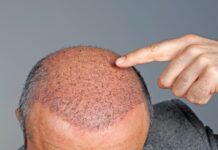

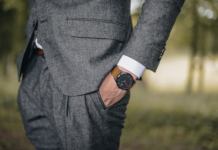
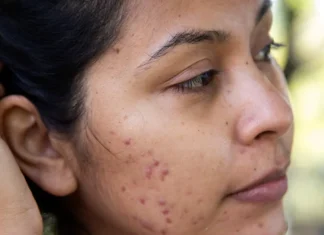

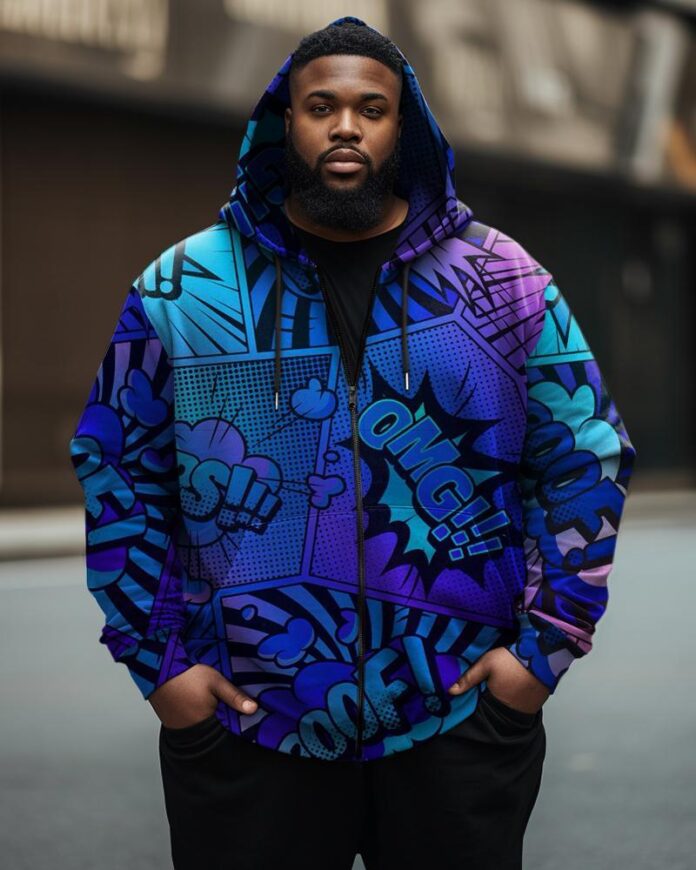








![16 Best Men’s Loafers 2023 [ BEST PREMIUM BRANDS ] best mens loafers](https://www.menshairstylesx.com/wp-content/uploads/2019/10/best-mens-loafers-1-100x70.jpg)
